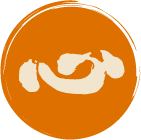Scoliosis
Significant improvements can be achieved in straightening the scoliosis, and in the comfort and functioning of the body.
Scoliosis is differentiated as functional or structural. It is functional when the curvature is caused by contracted muscles and the spine itself is intact. It is structural when the spinal bones themselves are involved. Functional scoliosis is easier to treat but even structural scoliosis is treatable because bones are in a continual process of renewal.
Clinically, structural scoliosis always involve a functional element. The curvature of the spine throws surrounding muscles into imbalance. The muscles assume abnormal tonicities to maintain the functioning of the musculoskeletal body. This adaptive behavior can spread through the body. What started as a left-right imbalance soon causes front-back and top-bottom imbalance. The organs may also be affected because of the effects of the scoliosis on the spinal nerves. In Chinese medicine, there are acupuncture points along the erector spinae that are thought to have direct influence on each and every interior organ.
In my experience of treating scoliosis, the functional contribution is usually severe. This in fact opens up the opportunity to bring improvements to even hardened, congenital scoliosis. Treatment combines acupuncture with manual manipulation and focuses on relaxing the musculature and restoring balance. Very often, obvious straightening of the spine can be felt and observed at the end of a treatment. There is always some lapse back because the body falls back on its old ways. However, with continued treatments over a period of time, significant improvements can be achieved in straightening the scoliosis, and in the comfort and functioning of the body.
Case 1: Structural Scoliosis
Twenty-three year old female with a very mild lateral curve to the left in the thoracic region but a sharp curve to the right at L3 so sudden and drastic as though that vertebra was notched out of place. Patient was treated once every three weeks with a combination of acupuncture and moxibustion. The curvature in her lower back noticeably relaxed with three treatments. At the fourth the scoliosis had become a gentle curve. Patient is continuing her treatments and a complete resolution of the scoliosis is expected.
Case 2: Functional Scoliosis
Twenty-seven year old female complained of pain on right upper back that made breathing difficult. Examination of her spine showed a lateral curve to the right from T4-T7, the widest part deviated almost two inches from the centerline. Musculature to the right was tense and hard. Her whole ribcage shifted laterally causing flatback on the left. Acupuncture was given together with Tuina manipulation. The muscles relaxed and released their pull on the spine. At the end of the treatment session her spine was almost completely straight and she could breathe comfortably. Patient continues to receive treatment once a week for other problems.
